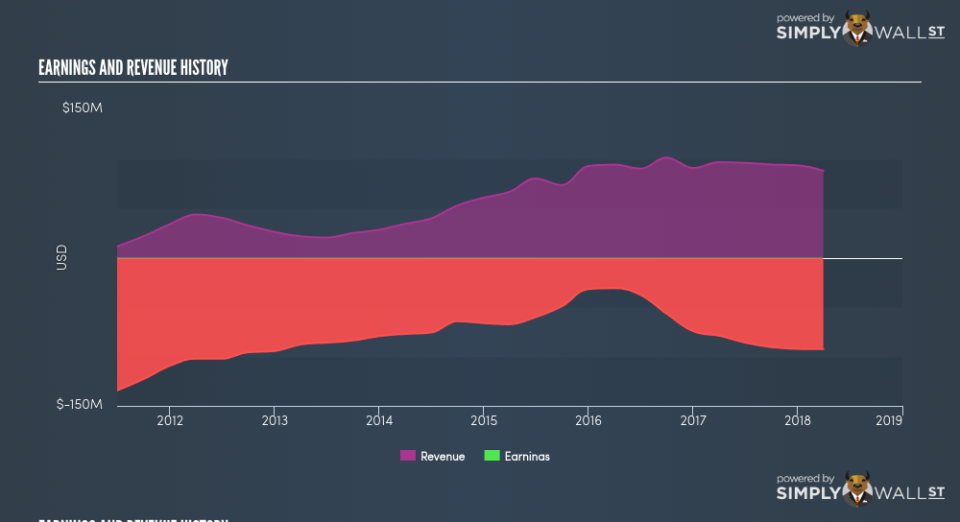Pacific Biosciences of California Inc’s (NASDAQ:PACB) Earnings Dropped -17.25%, How Did It Fare Against The Industry?

For investors, increase in profitability and industry-beating performance can be essential considerations in an investment. Below, I will examine Pacific Biosciences of California Inc’s (NASDAQ:PACB) track record on a high level, to give you some insight into how the company has been performing against its long term trend and its industry peers. View out our latest analysis for Pacific Biosciences of California
Did PACB perform worse than its track record and industry?
PACB is loss-making, with the most recent trailing twelve-month earnings of -US$92.50m (from 31 March 2018), which compared to last year has become more negative. Furthermore, the company’s loss seem to be growing over time, with the five-year earnings average of -US$79.63m. Each year, for the past five years PACB has seen an annual increase in operating expense growth, outpacing revenue growth of 23.20%, on average. This adverse movement is a driver of the company’s inability to reach breakeven. Inspecting growth from a sector-level, the US life sciences industry has been growing its average earnings by double-digit 14.21% in the prior year, and 19.77% over the past five. This means that any tailwind the industry is profiting from, Pacific Biosciences of California has not been able to leverage it as much as its industry peers.
Since Pacific Biosciences of California is loss-making, with operating expenses (opex) growing year-on-year at 10.16%, it may need to raise more cash over the next year. It currently has US$79.26m in cash and short-term investments, however, opex (SG&A and one-year R&D) reached US$123.45m in the latest twelve months. Even though this is analysis is fairly basic, and Pacific Biosciences of California still can cut its overhead in the near future, or open a new line of credit instead of issuing new equity shares, the outcome of this analysis still gives us an idea of the company’s timeline and when things will have to start changing, since its current operation is unsustainable.
What does this mean?
Though Pacific Biosciences of California’s past data is helpful, it is only one aspect of my investment thesis. With companies that are currently loss-making, it is always difficult to predict what will happen in the future and when. The most useful step is to examine company-specific issues Pacific Biosciences of California may be facing and whether management guidance has steadily been met in the past. You should continue to research Pacific Biosciences of California to get a better picture of the stock by looking at:
Future Outlook: What are well-informed industry analysts predicting for PACB’s future growth? Take a look at our free research report of analyst consensus for PACB’s outlook.
Financial Health: Is PACB’s operations financially sustainable? Balance sheets can be hard to analyze, which is why we’ve done it for you. Check out our financial health checks here.
Other High-Performing Stocks: Are there other stocks that provide better prospects with proven track records? Explore our free list of these great stocks here.
NB: Figures in this article are calculated using data from the trailing twelve months from 31 March 2018. This may not be consistent with full year annual report figures.
To help readers see pass the short term volatility of the financial market, we aim to bring you a long-term focused research analysis purely driven by fundamental data. Note that our analysis does not factor in the latest price sensitive company announcements.
The author is an independent contributor and at the time of publication had no position in the stocks mentioned.

 Yahoo Finance
Yahoo Finance 
